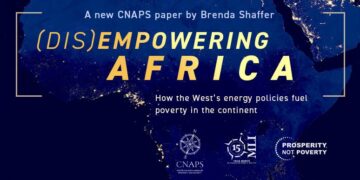This article was originally published by the National Review.
By Jon Hartley, January 8, 2023
Looking back on 2023, I would label rapid advancements in artificial-intelligence technologies (namely the adoption of large language models like ChatGPT) and the approval of a Malaria vaccine with 75 percent efficacy as two of perhaps the most important positive developments in the world. But within the U.S., one large development well worth highlighting is the massive expansion of universal school choice across many states.
What exactly is universal school choice? It’s an allocation of state funds to individual students, often in the form of education vouchers — subsidies given directly to parents for tuition at any school — government-authorized education savings accounts that parents can withdraw from to pay for education expenses, or tax credits. These funds range anywhere from around $2,500 to $15,000 per year per student and are available to parents who decide to educate their child outside of public schools, whether at privately run schools or at home. The ultimate goal is to improve student outcomes through competition and better education.
The number of states with universal or near-universal school choice has gone from 0 to ten in the past three years, with eight of those ten states adopting the model in 2023.
The combination of several different factors led the school-choice movement to have a more successful year in 2023 than in perhaps all past years combined, which is startling given how long advocates of choice have been pressing their case. Milton Friedman argued for school choice as early as the 1950s, including in his famous 1955 essay “The Role of Government in Education.”
Amid educational failures and poor student outcomes during the Covid-19 pandemic and its aftermath, political divides around the teaching of gender and sexuality in school curriculums have driven the children of conservative parents out of public schools, a process perhaps accelerated by a Supreme Court ruling, Espinoza v. Montana Department of Revenue, which allows for state education funds to be used in religious private schools. (The Court ruled that it is unconstitutional to disqualify private religious schools from receiving public funds for which other nonreligious private schools are eligible.)
The recent move to universal school choice began in Arizona under Governor Doug Ducey’s leadership, when, during the pandemic, Ducey decided to make passing it before the end of his second term a major priority. Arizona became the first state in the union to pass universal school choice in 2022. Then other states followed, including Arkansas, Florida, Indiana, Iowa, North Carolina, Ohio, Oklahoma, Utah, and West Virginia. Some states, such as Texas and Tennessee, could follow suit in the future. These battles often pit school-choice advocates against teachers’ unions who oppose choice in part because it takes funds out of public schools. Even Pennsylvania came close to passing a universal-school-choice law this past year.
As of now, only about half of the 22 states with Republican majorities in both state houses and Republican governors have passed universal or near-universal school-choice laws, leaving much more work to be done in 2024. States that could pass universal school choice in 2024 include Alabama, Kentucky, Louisiana, Mississippi, Missouri, Nebraska, North Dakota, Idaho, Tennessee, Texas, and Wyoming, according to school-choice advocate Corey DeAngelis and Fox News’ Joshua Nelson.
There are also upcoming legal battles which are raging around the legality of religious charter schools, with the Oklahoma Statewide Virtual Charter School Board approving St. Isidore of Seville Catholic Virtual School, which could become the first religious charter school in the nation. While the Oklahoma governor and legislature are supportive, the state’s Republican attorney general is suing to prevent the school from receiving public funding.
It’s hardly a secret that education can be a great vehicle for upwards economic mobility, especially for children of parents who are below the median income. There is substantial academic evidence that educational choice and competition in the form of vouchers, education savings accounts, and tax credits have the potential to improve educational outcomes as well as economic mobility. For this reason, in a country with many poorer areas suffering from failing schools and deficient education, the school-choice revolution should be something to be celebrated.
Jon Hartley is a senior fellow at the Macdonald-Laurier Institute, a Research Fellow at the Foundation for Research on Equal Opportunity, and an economics PhD student at Stanford University.








